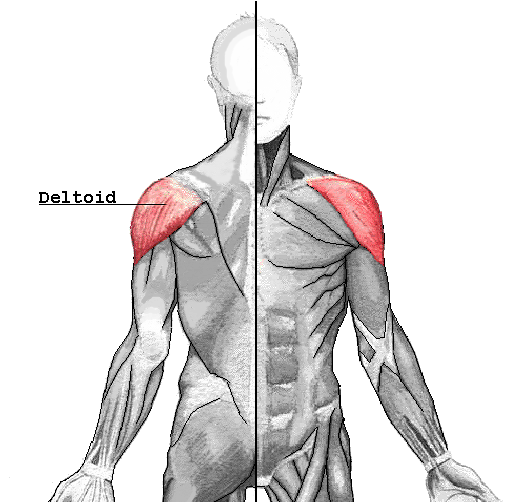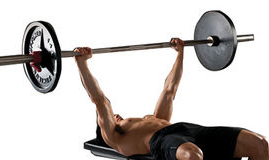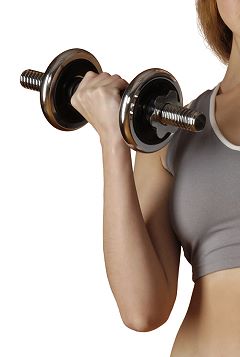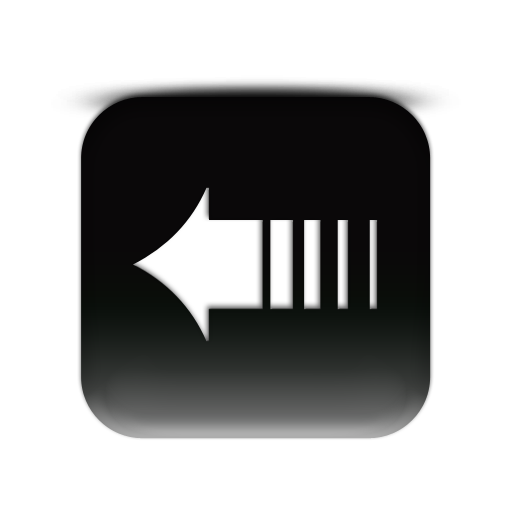If you've found this website helpful, please click the Donate button. Thanks for the support.
Find this page useful and think a friend may as well? Share it!
Find this page useful and think a friend may as well? Share it!
Exercise Guide
Like the site? Sign up for the FREE newsletter. I'll send a new article once or twice a month. Unsubscribe
anytime.
anytime.

About this Site l Contact l Free Newsletter l Subscribe to Rss Feed
Recommended Products l Fitness Store l Directly Fitness Blog
Recommended Products l Fitness Store l Directly Fitness Blog
HOW TO EXERCISE
1. Side Shoulder Raises (Dumbbell):
Starting Phase:
• Begin by selecting a weight and picking up dumbbells.
• Hold hands at sides with weight in your hands.
• Face straight forward wit upright body, chest high, and head forward.
• Feet should be shoulder width apart.
• Palms should be facing the sides of your body.
Upward Phase:
• With a slight bend in the elbows raise your arms at the sides.
• Shoulders should not deviate forward or backward.
• Do not raise the weight above your shoulders.
• Don’t allow wrist to rise above the elbows at any point in the exercise.
• Don’t bend at the elbow more than 5 degrees.
• A slight bend should be present to ensure shoulders are being worked and
not other muscles assisting.
Downward Phase:
• Slowly lower the weight in the sideways arch motion that you performed
upward.
• Stop just short of full rest and perform the next repetition to keep tension
on the shoulders.
• Be sure to keep body upright and straight.
Tips:
• Lead the upward movement with your elbows rather than your hands. This is make sure your shoulders are working, not your forearms. It will also reduce injury rates as well.
2. Side Shoulder Raises (Cable):
Starting Position:
• Begin by standing with your side facing the cable pulley.
• Set handle at lowest setting on cable tower.
• The shoulder on the side AWAY from the pulley will be the exercised
muscle.
• Pick up handle with hand rested across waist (because opposite side hand
picking up handle).
• Make sure palm of hand is facing cable tower.
• Upper body should be tall with the lower legs in a slight knee bent
position.
• Feet shoulder be slight wider than shoulder width.
Upward Phase:
• Raise shoulder out to side while keeping a slight bend in the elbow.
• Be sure to keep that wrist below the elbow while going through the arching motion!
• Stop at or just shy of 90 degrees from the start position.
Downward Phase:
• Slowly allow the pulley weight to pull you back the starting position.
• Control the movement and don’t drop the weight.
• Stop just shy of resting position before beginning another repetition to keep tension on the deltoid muscles.
Tips:
• You will do less weight with shoulder side raises with a cable than with a
dumbbell so don’t expect to exercise with the same weight!
• Focusing on keeping your elbow above your wrist during the movement
will help your shoulder on maximum tension—for maximum results.
3. Reverse Fly’s (Dumbbell):
Starting Position:
• Begin by selecting a weight and sitting on a bench with legs at 90
degrees.
• Now lean forward until your chest meets your thighs.
• Rest on your thighs with your hands hanging down with the dumbbells.
• Hands with dumbbells should be hanging behind legs.
• Have palms facing toward your body.
• Head can be facing upward or downwards, just make sure neck is held in
that position.
Upward Phase:
• Raise arms out the sides as you pinch your shoulder blades together.
• Make sure your arms stay in a straight sideways arch 90 degrees from
your body.
• Don’t not lift weights out to front or too far behind.
• Motion is complete when shoulder blades are contracted and cannot lift
any higher.
• Only a slight bend in the elbows should be present.
• Don’t hoist weight up with momentum!
Downward Phase:
• Allow the weight to slowly lower back down underneath your legs.
• Don’t deviate from the side arching motion.
• Keep trunk close by thighs.
Tips:
• Breathe out as you lift the weight and breathe in as you lower it. This will
allow for optimal room for the range of motion.
4. Reverse Fly’s (machine):
Starting Position:
• Seat facing toward the weight stack on the machine.
• If the handles aren’t set to the reverse fly settings, be sure to change it.
(Most machines have both fly’s and reverse fly exercises in one machine,
just need to change the lever settings).
• Grasp the handles with a palms toward each other grip.
• Make sure your arms are at 90 degree angles in respect to your trunk.
Backward Movement Phase:
• Initiate the motion with your rear shoulders and not your arms.
• Make sure your shoulders are at 90 degrees throughout the motion.
• Don’t let your arms deviate out of this 90 degree horizontal plane of
motion.
• Pinch your shoulder blades together at the end of the movement.
• Elbows should be slightly flexed throughout motion.
Forward movement Phase:
• Allow weight to slowly return back to the starting position.
• Don’t deviate from the horizontal arch of motion.
• Stop just short of resting position to keep tension on the rear deltoids.
Tips:
• Don’t just pull the weight back with your arms, focus on using your
shoulders and mid back to pull the weight.
5. Front shoulder Raises (Dumbbell):
Starting Position:
• Begin with dumbbells in both hands.
• Bring arms slightly in front of your body while letting them hang with
weights.
• Make sure both palms are facing toward your body.
• Feet should be slightly wider than shoulder width.
Upward Phase:
• Contract your anterior shoulders to initiate the movement.
• Allow your arms to follow with a slight bend at the elbow.
• Body, and head should be straight and upright.
• Stop at or just short of 90 degrees of flexion (arm shouldn’t rise past
shoulder height).
• Don’t hoist the weight up with momentum.
Downward Phase:
• Slowly lower the weight in the same arching motion it was raised.
• Keep palms in the same position you started.
• Natural tendency will be for your palms to begin facing each other.
• Stop just short of resting position for continued tension on the shoulder.
6. Front Shoulder Raises (Cable):
Starting Phase:
• Start by standing facing away from a cable tower pulley.
• Grasp the pulley handle with either hand and let rest by side.
• Palms should be facing backwards.
• Feet can be more narrow than shoulder width if preferred to allow the
cable to pass the side of the hips easier.
Upward Phase:
• Slowly initiate the movement by contracting your front deltoid (shoulder).
• Don’t hoist the weight with momentum as this can cause injury.
• Stop just shy of 90 degrees from the resting position.
• Keep a slight bend in the elbow throughout motion.
Downward Phase:
• Allow weight to slowly descend in the forward arching motion you raised
it.
• Stop just shy of the resting position to keep tension on the front deltoid.
Tips:
• Don’t expect to lift a lot with this exercise! Cable machines will be harder
than using open dumbbells with this exercise.
• It sometimes helps to have a wider base if possible so you will be more
stable, as long as you don’t mind the cable rubbing against your side.
• Try lift forward and inward to bring a couple of more muscles into the mix!
Shoulder Exercises:
(In order of appearance)
1. Side Shoulder Raise
(Dumbbell)
2. Side Shoulder Raise
(Cable)
3. Reverse Fly's (Cable)
4. Reverse Fly's (Machine)
5. Front Shoulder Raises
(Dumbbell)
6. Front Shoulder Raises
(Cable)
(In order of appearance)
1. Side Shoulder Raise
(Dumbbell)
2. Side Shoulder Raise
(Cable)
3. Reverse Fly's (Cable)
4. Reverse Fly's (Machine)
5. Front Shoulder Raises
(Dumbbell)
6. Front Shoulder Raises
(Cable)


Exercises:
SHOULDERS




